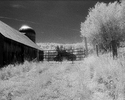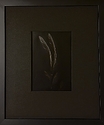Hello!
I was recently working in the darkroom of a close family friend, who has been a lifelong photographer. While I was there, he gifted me about 1000 sheets of AZO grades 2 & 3 from the 90s. The paper printed beautifully while I was there, and I made some of my best prints ever on it. Bringing it back to my darkroom, I've noticed that while the contrast appears fine and the paper is not at all fogged, the grade three has lost significant speed. Under my enlarger, I'm getting exposure times of over one minute, sometimes up to three.
Is there any way that I should deal with this? Should I just suck it up and wait the long exposure times out or is there a revision I can make to my system?
I'm printing under the light of a Besseler Dichro 67, lens in (lens out caused vignetting on 5x7 when the enlarger was as close to the paper as possible), Developing in Ilford multigrade (I have some Ansco 130 on the way, as I've heard good things about it), toning in selenium.
Thanks!
I was recently working in the darkroom of a close family friend, who has been a lifelong photographer. While I was there, he gifted me about 1000 sheets of AZO grades 2 & 3 from the 90s. The paper printed beautifully while I was there, and I made some of my best prints ever on it. Bringing it back to my darkroom, I've noticed that while the contrast appears fine and the paper is not at all fogged, the grade three has lost significant speed. Under my enlarger, I'm getting exposure times of over one minute, sometimes up to three.
Is there any way that I should deal with this? Should I just suck it up and wait the long exposure times out or is there a revision I can make to my system?
I'm printing under the light of a Besseler Dichro 67, lens in (lens out caused vignetting on 5x7 when the enlarger was as close to the paper as possible), Developing in Ilford multigrade (I have some Ansco 130 on the way, as I've heard good things about it), toning in selenium.
Thanks!





